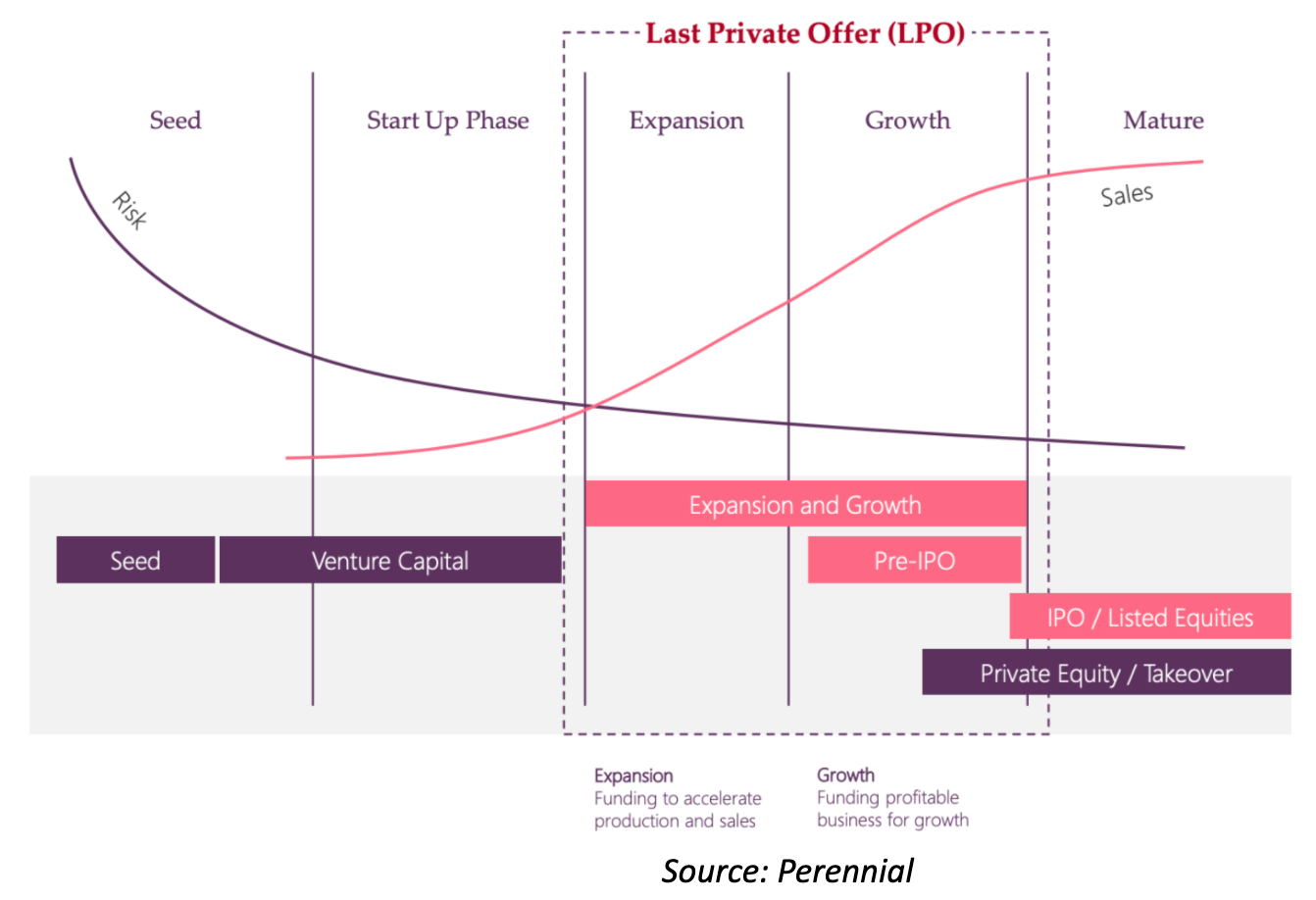Here’s where you’ll find the next generation of disruptors
For growth investors, technology stocks have certainly been the play of the day - or more aptly the ‘play of the decade’. The Nasdaq 100 Index, widely recognised as the global barometer of tech performance, has delivered annualised returns of 20.17% over the 10 years till September 2020, and 31.65% in the year of Covid-19 alone.
The big issue that confronts investors is that the listed technology market is richly priced; the average P/E ratio for a U.S. tech company is close to 50 times, and that same figure is north of 60 times for domestic peers. To that extent, Anthony Murphy of Lucerne Investment Partners asserts that investors buying growth stocks themselves or via traditional equity managers are playing with fire given the market has already priced in the prospects for these companies (and then some).
But that is not to say tech stocks should be written-off. This sector will keep presenting opportunities, but it is how they are accessed that is becoming more critical. One way Lucerne is mining for value is by tapping the right expertise to access the private market; profitable early-stage tech companies trading at 5-10 times earnings, with the possibility of exponential growth as they go public.
Here, Anthony expands on his approach to finding the next disruptors – at not-so-ludicrous prices.

Image: Anthony Murphy, Lucerne Investment Partners
What are some of the most exciting aspects of investing now, particularly for investors looking at long-term growth?
Technological disruption has been a hugely successful long-term investing trend, and while it has been in play for years, the theme has accelerated as the impacts of COVID force young and old alike to adopt technology and innovation even faster. Change always brings opportunity, and change on a global scale brings opportunity on a global scale. Managers exposed to the big disruption stories were already performing well pre-COVID, but many have seen remarkable gains since.
Just as the tidal wave of disruption will continue to push through markets, we think volatility is here to stay as well. The global pandemic is into its second innings in the Northern Hemisphere, the global economy is still in turmoil, and the effects of extreme monetary and fiscal support, and towering levels of government debt, will play out for a long time yet. The question for investors to ask is which investment strategies are best equipped for a volatile market, or could at least provide some shelter?
Another theme is to overlook increasingly overcrowded markets, in favour of having greater control in generating returns by targeting markets and strategies where less competition exists. This is baked into Lucerne’s investment philosophy, and using our established personal networks to identify and evaluate opportunities before they become more widely known, we move quickly and efficiently on the best of them for our investors.
What are the best ways to get exposure to these themes?
If you're investing in traditional equities, it's very difficult to take advantage of mispricing. Everybody's in there, it’s crowded, and there are a plethora of similar opportunities. In contrast, the private market is more opaque, there are fewer players and it is possible to find deeply discounted opportunities. While seed investing and venture capital typically focus on much earlier-stage companies, the private to public space focuses on more developed companies that are usually raising their last private round and are only a year or two from listing.

Within this private to public part of the market there are many high-quality private, unlisted companies that would love to be listed to access the deep capital pools provided by the equity capital market divisions of stockbroking firms.
So there is a great opportunity for specialists investing in the better quality of these private companies who can then help support their pathway to going public, and participate in the significant valuation arbitrage this part of the growth cycle can create.
While price-earnings ratios on profitable private companies can be in 5-10 range, the benefits that being listed create can see the PE ratio increase into double digits, more in line with the market’s historical average of 15, or higher still.
Some of the managers investing in this private to public theme include Regal Emerging Companies Strategy which has now run four very popular series, with their fourth closing recently; Saville Capital which has also launched a private to public fund this year; and Perennial which have just closed its second private to public fund following the strong performance of its first.
With less competition here, funds can be highly selective about which companies to back, and are typically in a stronger position to dictate deal terms than in the public markets. In fact, they often write their own term sheets instead of having to accept terms provided by an investment bank, as is more typical in the listed space.
This part of the market is an incubator for the next crop of listed technological disruptors, and by giving investors access to them early - and at a discount to the price they later list at – the gains can be amplified for those that succeed.
For example, 4D Medical (4DX), a global medtech company has been one of the top-performing IPO’s of 2020, listing at $0.73 in August and already trading at $2.12, for a 192% gain. However, when 4D Medical raised capital in the last private round before listing, it did so at $0.50. Perennial’s private to public fund that participated in that deal is therefore looking at an even more impressive 324% gain, illustrating the potential for this strategy.
How do you see the faster pace of innovation reflected in the conversations you are having with clients?
COVID lockdowns have pushed the pace of disruption to light speed in 2020 as Ecommerce, video calls and streaming services changed from useful services to essential ones. Whole new demographics are now proficient at hosting zoom calls, and many investors among them have spotted the near 8-fold year-to-date increase in Zoom’s share price that illustrates the benefits of being on the right side of disruption!
So, we have certainly noticed more traditional investors enquiring about investing in disruption, and asking which managers are best positioned to leverage that theme. We have for some time been allocating to the Munro Global Growth Fund, who Livewire readers would know well, and have been performing very well for investors.
Likewise, the extreme volatility that equity markets experienced in the March quarter left a deep impression on investors. While we have long maintained an intense focus on capital preservation and keeping a low correlation to equities, we have seen more questions on ways to mitigate risks from the next market drawdown. One way is to look for good risk-adjusted returns from assets outside of the mainstream investment options from managers investing in less saturated markets.
Taking a 10-year view, which Australian funds or companies would you single out as the most progressive or interesting in the areas of high-growth, innovation, ESG or impact investing?
Perennial, our preferred manager in the private to public space, delivered over 26% in its first year from its first private to public fund, during a very difficult market environment. With much of the portfolio unlisted, the value of the units did not fall significantly during the volatility of February and March. They have just raised over A$125 million for their second private to public fund and Lucerne was a significant participant. While this fund is now closed, it is a good example of the kind of fund that can display a lower correlation to equity markets while still generating strong returns for our investors. We are currently completing due diligence on some other new-to-market opportunities that are well positioned for prevailing market conditions.
These types of funds are not something that you are likely to see on the approved product lists of traditional wealth managers.
However, as an independent investment group, Lucerne can invest in any manager (or investment) that aligns with your objectives, and the fund scored well against our selection criteria as laid out in our previous article on Livewire, How to select the next CSL of fund managers.
While there are justifiable doubts over the viability of the traditional way of investing, now more than ever, we believe investors are facing an opportunity to generate outsized returns. Though to do this, you have to think differently and operate outside of traditional investment strategies.
As a space that stands to produce the next generation of disruptive companies across a very diverse range of industries, that avoids most short-term market volatility, and is not at all crowded, the private to public theme is one that we find compelling in the current market settings and is one we will continue to monitor.
SURVEY: Where do you think the world is heading?
As always, we're keen to understand what our readers want to learn more about, and how you're thinking about investing for the future. We've put together a 3-minute survey where you can tell us about the growth opportunities you're investing and those you want to learn more about.
4 topics
1 stock mentioned
1 fund mentioned
1 contributor mentioned


